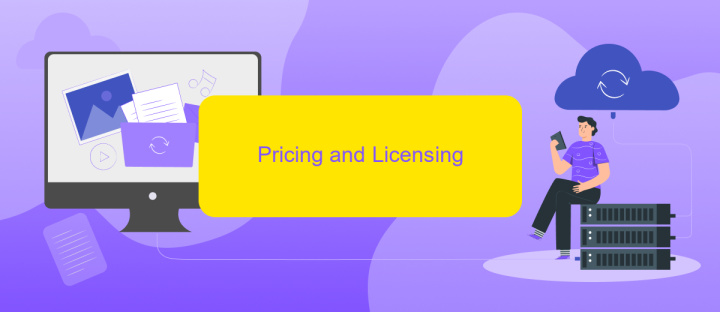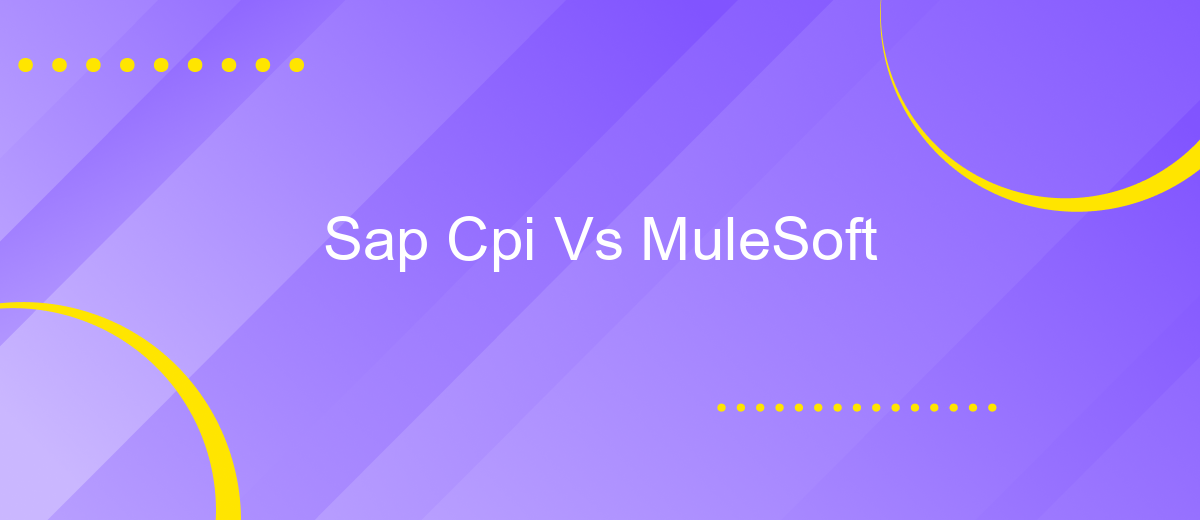Sap Cpi Vs MuleSoft
In the rapidly evolving landscape of integration platforms, SAP Cloud Platform Integration (CPI) and MuleSoft have emerged as leading solutions for connecting disparate systems and data sources. This article delves into a comparative analysis of SAP CPI and MuleSoft, examining their features, strengths, and potential limitations to help organizations make informed decisions tailored to their specific integration needs.
Introduction
In the rapidly evolving landscape of digital transformation, businesses are increasingly relying on integration platforms to streamline their operations and enhance connectivity between diverse systems. Two prominent players in this domain are SAP Cloud Platform Integration (CPI) and MuleSoft. Both platforms offer robust solutions for integrating applications, data, and processes, but they cater to different needs and preferences.
- SAP CPI is designed to seamlessly integrate with SAP environments, offering pre-built connectors and templates for SAP applications.
- MuleSoft, on the other hand, provides a more versatile approach, supporting a wide range of systems and protocols beyond SAP.
- Both platforms aim to reduce the complexity of integrations and improve business agility.
Choosing the right integration platform depends on various factors such as existing IT infrastructure, specific business requirements, and long-term goals. Additionally, services like ApiX-Drive can further simplify the integration process by offering user-friendly tools and automation capabilities, making it easier for businesses to connect their systems without extensive technical expertise.
Capabilities Comparison

SAP CPI (Cloud Platform Integration) and MuleSoft are two leading integration platforms that offer robust capabilities for connecting diverse systems and applications. SAP CPI is tailored for SAP environments, providing seamless integration with SAP applications and services. It offers pre-built connectors, integration flows, and extensive support for various protocols, making it a strong choice for enterprises heavily invested in SAP ecosystems. On the other hand, MuleSoft is renowned for its versatility and extensive library of connectors, supporting a wide range of systems beyond SAP. MuleSoft's Anypoint Platform enables users to design, build, and manage APIs and integrations with a high degree of flexibility and scalability.
Both platforms offer powerful tools for managing integrations, but they cater to different needs. SAP CPI excels in scenarios where tight integration with SAP systems is crucial, while MuleSoft's strength lies in its ability to integrate a broader array of applications and services. Additionally, services like ApiX-Drive can complement these platforms by providing pre-configured integration templates and automation tools, simplifying the integration process even further. This makes it easier for businesses to connect their systems and streamline workflows without extensive coding or technical expertise.
Pricing and Licensing

When comparing SAP CPI and MuleSoft, pricing and licensing are crucial factors to consider. Both platforms offer robust integration capabilities, but their cost structures differ significantly, impacting your overall budget and long-term investment.
- SAP CPI: SAP CPI operates on a subscription-based model. Pricing is usually determined by the number of connections and the volume of data processed. Enterprises can choose from different tiers based on their specific needs, making it scalable for various business sizes.
- MuleSoft: MuleSoft's pricing is also subscription-based but tends to be higher compared to SAP CPI. It offers a tiered pricing model that includes different levels of support and additional features. The cost is influenced by the number of applications, APIs, and data volume.
Both platforms require a significant investment, but the choice may depend on your specific integration needs and budget constraints. For businesses looking for more flexible and cost-effective integration solutions, services like ApiX-Drive can be a viable alternative, offering a user-friendly interface and competitive pricing.
Use Cases

When comparing SAP CPI and MuleSoft, it's essential to consider their use cases to determine which platform best suits your needs. SAP CPI excels in integrating SAP applications and services, making it an ideal choice for businesses heavily invested in the SAP ecosystem. MuleSoft, on the other hand, offers a more versatile integration platform that supports a wide range of applications and services beyond SAP.
Both platforms are designed to streamline business processes through seamless integration, but their specific use cases can vary significantly. For instance, SAP CPI is often used for integrating SAP S/4HANA with other SAP and non-SAP applications, ensuring a cohesive and efficient workflow. MuleSoft, with its extensive library of connectors, is suitable for organizations looking to integrate a diverse set of applications, including cloud services, on-premises systems, and third-party APIs.
- Integrating SAP S/4HANA with other SAP modules using SAP CPI
- Connecting cloud services and on-premises systems with MuleSoft
- Utilizing MuleSoft's API management capabilities for diverse applications
- Streamlining SAP-centric business processes with SAP CPI
Additionally, services like ApiX-Drive can further enhance integration capabilities by providing easy-to-use tools for connecting various platforms. This can be particularly useful for businesses that require quick and efficient integration solutions without extensive technical expertise. By leveraging these tools, companies can achieve more streamlined operations and improved data flow across their systems.
Conclusion
In conclusion, both SAP CPI and MuleSoft offer robust solutions for integration needs, each with its own strengths and weaknesses. SAP CPI is ideal for organizations heavily invested in SAP ecosystems, providing seamless integration and native support for SAP applications. On the other hand, MuleSoft stands out with its versatile API-led connectivity and strong community support, making it a great choice for diverse integration scenarios across various platforms.
When deciding between these two, it's crucial to consider your organization's specific requirements, existing infrastructure, and long-term goals. Tools like ApiX-Drive can further simplify the integration process, offering a user-friendly platform to connect various applications without extensive coding. Ultimately, the right choice will depend on how well the solution aligns with your business needs and technical landscape.
- Automate the work of an online store or landing
- Empower through integration
- Don't spend money on programmers and integrators
- Save time by automating routine tasks
FAQ
What are the main differences between SAP CPI and MuleSoft?
Which platform is more suitable for integrating non-SAP systems?
How do both platforms handle API management?
Can both platforms be used for real-time data integration?
What are the options for automating and setting up integrations without deep technical knowledge?
Time is the most valuable resource in today's business realities. By eliminating the routine from work processes, you will get more opportunities to implement the most daring plans and ideas. Choose – you can continue to waste time, money and nerves on inefficient solutions, or you can use ApiX-Drive, automating work processes and achieving results with minimal investment of money, effort and human resources.


